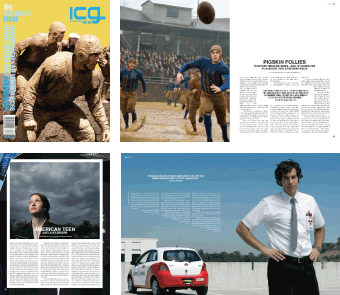 |
 |

LEATHERHEADS
DP Newton Thomas Sigel, ASC
By Pauline Rogers
THE VISITOR
DP Oliver Bokelberg
By Jon Silberg

CHUCK
DP Buzz Feitshans
By Sally Christgau

PRESIDENTS LETTER
Steven Poster, ASC
CREW VIEW
By Bonnie Goldberg
OPERATING TIPS
By Paul Varrieur, SOC
|
 |

2008 ACADEMY AWARD NOMINEES FOR CINEMATOGRAPHY
By David Heuring and Bob Fisher
2008 SUNDANCE FILM FESTIVAL
By Neil Matsumoto and David Geffner

2008
ICG PUBLICIST
AWARDS
By Pauline Rogers
|